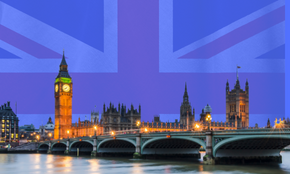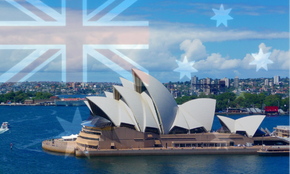How to Apply for the Fulbright Scholarship: A Step-by-Step Guide
What Is the Fulbright Scholarship and Who Is Eligible?
How to Apply for the Fulbright Scholarship: A Step-by-Step Guide
The Fulbright Scholarship stands as one of the highest-ranking and most sought-after educational grants available to both students and professionals across the globe. Established in honor of Senator J. William Fulbright, this scholarship initiative is designed to foster greater understanding among individuals from the United States and foreign nations by facilitating the sharing of knowledge and abilities. This detailed manual will assist you in successfully navigating the Fulbright Scholarship application process, thereby enhancing your likelihood of being chosen for this transformative chance.
Get started to take guidance from an expert counselor for FREE
#Getting to Know the Fulbright Program:
Before you start the application journey, it's essential to grasp the essence of the Fulbright Program. This program provides opportunities for research, study, and teaching across more than 140 nations. It's structured into various types:
-
Fulbright U.S. Student Program: Suitable for recent college graduates, those pursuing advanced degrees, and early career professionals.
-
Fulbright Foreign Student Program: Designed for students from other countries looking to study or carry out research in the U.S.
-
Fulbright Scholar Program: Aimed at academics and professionals for research and teaching activities.
-
Fulbright Specialist Program: For U.S. professionals to offer their specialized knowledge.
-
Fulbright Teacher Exchange Program: For teachers to share their skills in different countries.
Each type has its own set of requirements and application steps. This guide will mainly cover the Fulbright U.S. Student Program and the Fulbright Foreign Student Program.
#Phase 1: Assess Your Qualifications:
The initial phase in the application process for the Fulbright Scholarship involves assessing your qualifications. The fundamental qualifications needed are:
-
Citizenship: Applicants for the U.S. Student Program must be U.S. citizens or nationals, while those for the Foreign Student Program should be nationals of the specific country.
-
Educational Experience: For the U.S. Student Program, applicants are required to have a bachelor's degree or an equivalent qualification prior to the commencement of the scholarship. For the Foreign Student Program, applicants need to possess at least a bachelor's degree.
-
Language Skills: Applicants are expected to be fluent in the language of the host country, should the project necessitate it.
-
Health Status: Applicants should be in sound health and capable of finishing the program.
#Phase 2: Explore Available Choices:
After confirming your suitability, the following phase is to delve into the wide array of Fulbright options accessible to you. Explore the Fulbright website to discover the various scholarships and host nations. Think about the following:
-
Host Country Selection: Pick a nation that matches your academic and career objectives.
-
Grant Category: Decide if you prefer to apply for a study/research scholarship or an English Teaching Assistant (ETA) role.
-
Project Proposal Development: Begin to contemplate your project proposal. It should be practical, pertinent, and in line with the objectives of the Fulbright Program.
#Phase 3: Reach Out to Your Fulbright Program Advisor:
If you're applying from the U.S., numerous colleges have a Fulbright Program Advisor (FPA) available to offer advice and assistance at every stage of the application journey. Reach out to your FPA to:
-
Talk About Your Goals: Present your concepts and receive input on your project plan.
-
Learn About the Schedule: Acquire details on when applications are due and what's needed.
-
Request Guidance: Inquire about ways to enhance your application.
#Phase 4: Get Your Application Ready:
The Fulbright application is made up of various parts, each needing thorough preparation:
-
Online Application: Set up an account on the Fulbright website and complete the necessary forms.
-
Grant Purpose Statement: A two-page document that describes your planned project or research, covering its aims, methods, and importance.
-
Personal Statement: A one-page narrative about your background, reasons for applying, and how the Fulbright program will help achieve your objectives.
-
Recommendation Letters: Gather three recommendation letters from people who can vouch for your skills and potential.
-
Transcripts: Submit transcripts from all the colleges or universities you've been to.
-
Language Skills: If relevant, add language skills test scores or a language assessment form.
-
Extra Materials: Depending on your area of study, you might need to provide extra documents, like a portfolio or examples of your writing.
#Phase 5: Write and Edit Your Essays:
The Grant Purpose Statement and Personal Statement are essential parts of your application. Here are some tips to write engaging essays:
-
Be Detailed: Clearly explain your project, including the research question, how you'll conduct it, and what you hope to achieve.
-
Demonstrate Fit: Show how your project matches the objectives of the Fulbright Program and adds value to both sides.
-
Think About Your Background: Emphasize experiences, skills, and accomplishments that make you ready for the project you're applying for.
-
Ask for Input: Share your early versions with mentors, advisors, and classmates for their opinions. Make several revisions to make sure your essays are clear and well-organized.
#Step 6: Get Solid Recommendation Letters:
Recommendation letters are crucial for your application. Here's how to get solid ones:
-
Pick Carefully: Pick recommenders who are close to you and can talk about your skills and future potential.
-
Give Details: Give your recommenders your project plan, personal essay, and CV to assist them in crafting thorough letters.
-
Ask Promptly: Allow your recommenders plenty of time to compose and turn in their letters before the due date.
-
Check-In: Send kind reminders to make sure the letters are submitted on time.
#Phase 7: Finalize Your Application Online:
After gathering all the necessary materials, it's time to finalize your application online. Here's what you need to do:
-
Enter Personal Info: Provide your personal details, educational history, and project specifics with precision.
-
Upload Required Papers: Share your Grant Purpose Statement, Personal Essay, transcripts, and any other essential documents.
-
Submit Recommendation Letters: Make sure your recommenders have submitted their letters via the online platform.
-
Check and Edit: Thoroughly go over your application to spot any mistakes or missing information. Edit all documents to make sure they are typo-free and grammatically correct.
#Phase 8: Get Ready for the Interview:
Should your application make it to the next round, you might get called in for an interview. This is your chance to talk about your project in great detail and show that you're a good fit for the Fulbright Program. Here's what you need to do to get ready:
-
Know Your Project Inside Out: Be ready to talk about your project's goals, how you plan to achieve them, and why they're important.
-
Work on the Big Questions: Get comfortable with answering typical interview questions, like why you picked the host country, how your project helps both sides understand each other better, and how you plan to deal with any problems.
-
Keep Up with the News: Keep up with what's happening in the world and in relation to your project and the country you'll be in.
-
Act Professionally: Dress the part, be on time, and speak in a way that's clear and confident.
#Phase 9: Send a Follow-Up Email:
After the Interview Once the interview is over, send a follow-up email to show your appreciation for the chance to interview. Take some time to think about the interview and think about any advice or critiques given by the interviewers. Take their advice into account to improve your project proposal and get ready for what comes next.
#Phase 10: Be Patient and Wait for the Outcome:
The period of waiting can be stressful, but it's a crucial part of the journey. During this time, do the following:
-
Keep Active: Keep up with activities that are relevant to your project and area of study.
-
Get Ready for the Future: If you're chosen, you'll have to fill out more forms and get ready to leave. If you're not chosen, think about applying again in the future and use the feedback to make your application better.
#Summation:
Seeking a Fulbright Scholarship presents both difficulties and benefits. By adhering to this detailed roadmap and dedicating the required hard work and commitment, you can enhance your likelihood of being chosen for this esteemed opportunity. The Fulbright journey provides unmatched chances for scholarly and career advancement, cross-cultural interaction, and worldwide influence. Best of luck with your application, and may you begin a life-changing adventure through the Fulbright Program!
Read More:
- Why Should You Study In The USA?
- Why Should You Study In The UK?
- Why Should You Study In The Canada?
- Why Should You Study In The New Zealand?
- Why Should You Study In The Australia?
- Why Should You Study In France?
- Why Should You Study In The Ireland?
- Why Should You Study In The Netherlands?
- Why Should You Study In The Germany?
- Why Should You Study In The Singapore?
- Why Should You Study In The Sweden?
- Why Should You Study In The Switzerland?
- Why Should You Study In Finland?
- Why Should You Study In The Japan?
- Why Should You Study In The Denmark?
Ask Your Question
Popular Tags
- MS and ME and Masters
- Best Colleges And Top Programs
- Top reasons
- Scholarships and Financial Aid
- Best Student Cities
- Job and Career Prospects
- PhD and Doctorate
- General
- Work VISA
- Age Limit
- BS and BTech and Bachelors
- Eligibility
- News Update
- International Student Travel
- Higher Education
- Cost of Study
- Life,Climate,Food and Work Options
- MBA
Related Articles


Evaluate your profile for Bachelors, Masters & PhD Programs, to Study Abroad.
Take the First Step Towards Your Global FutureCheck the downloadable guides!!

STUDY-IN-USA-Guide

STUDY-IN-UK-Guide

STUDY-IN-CANADA-Guide































































































